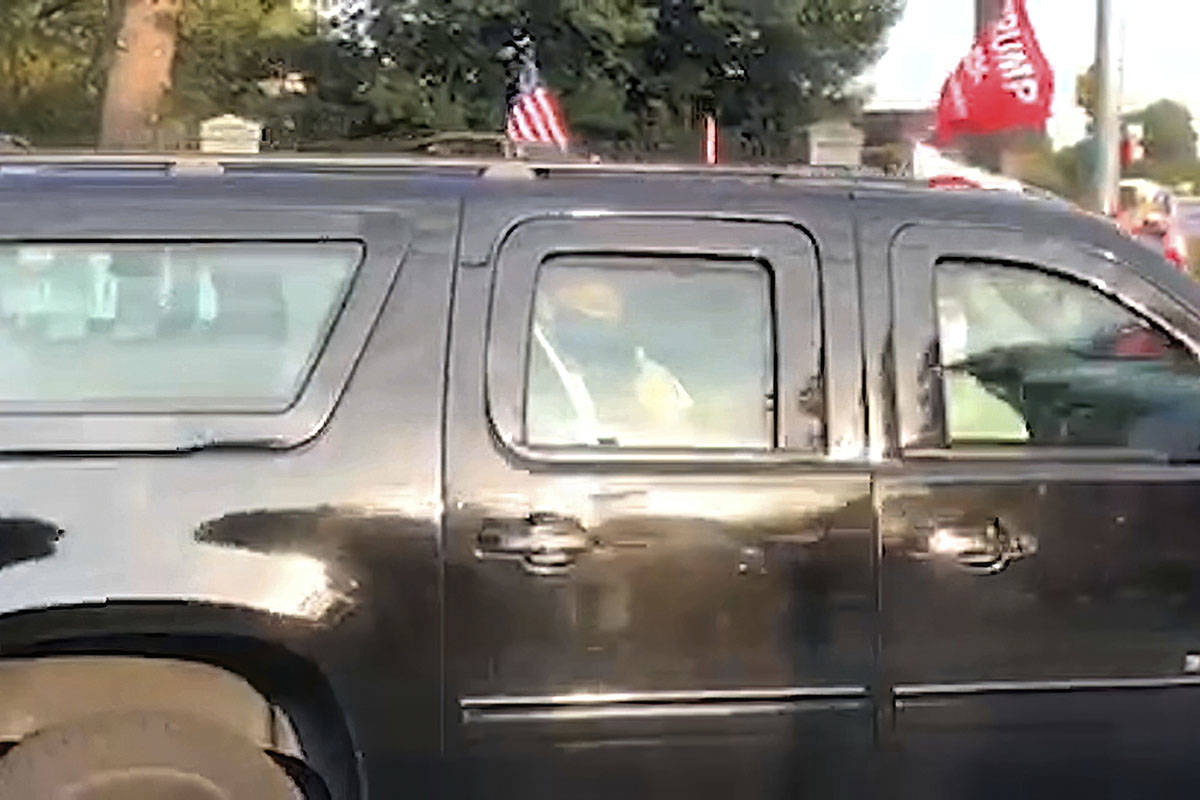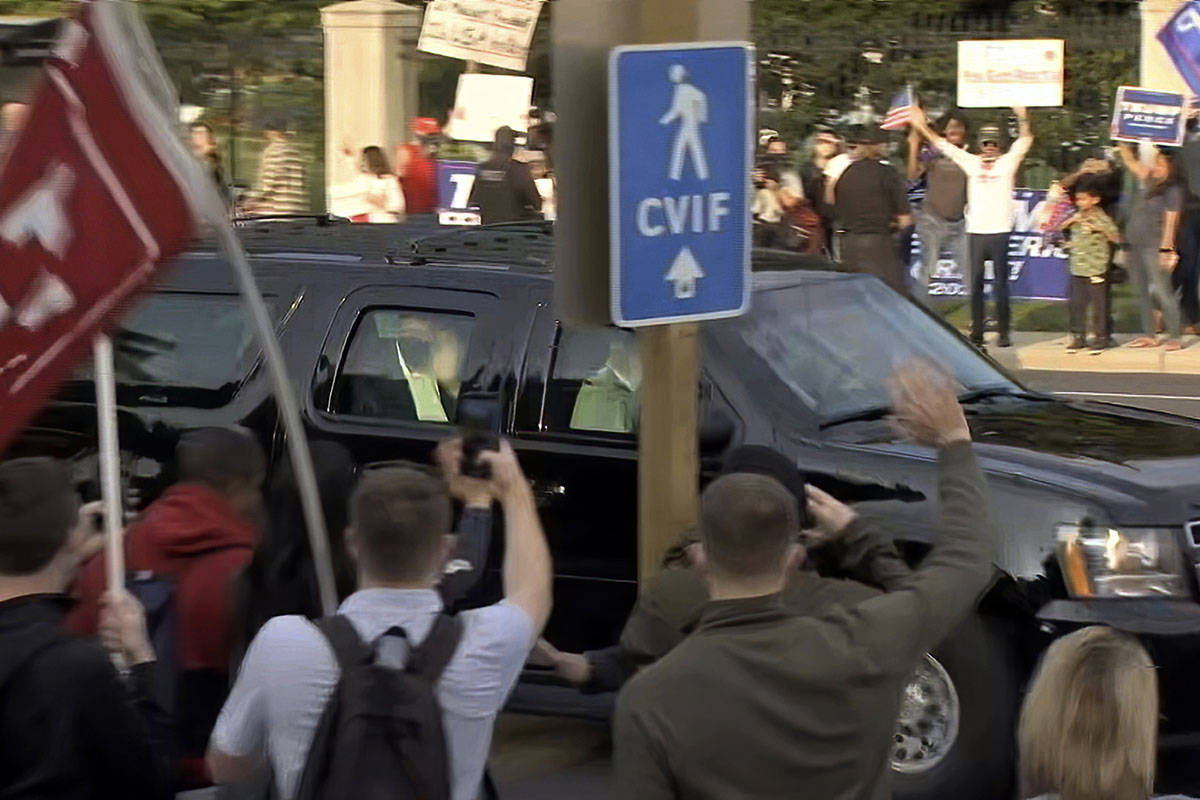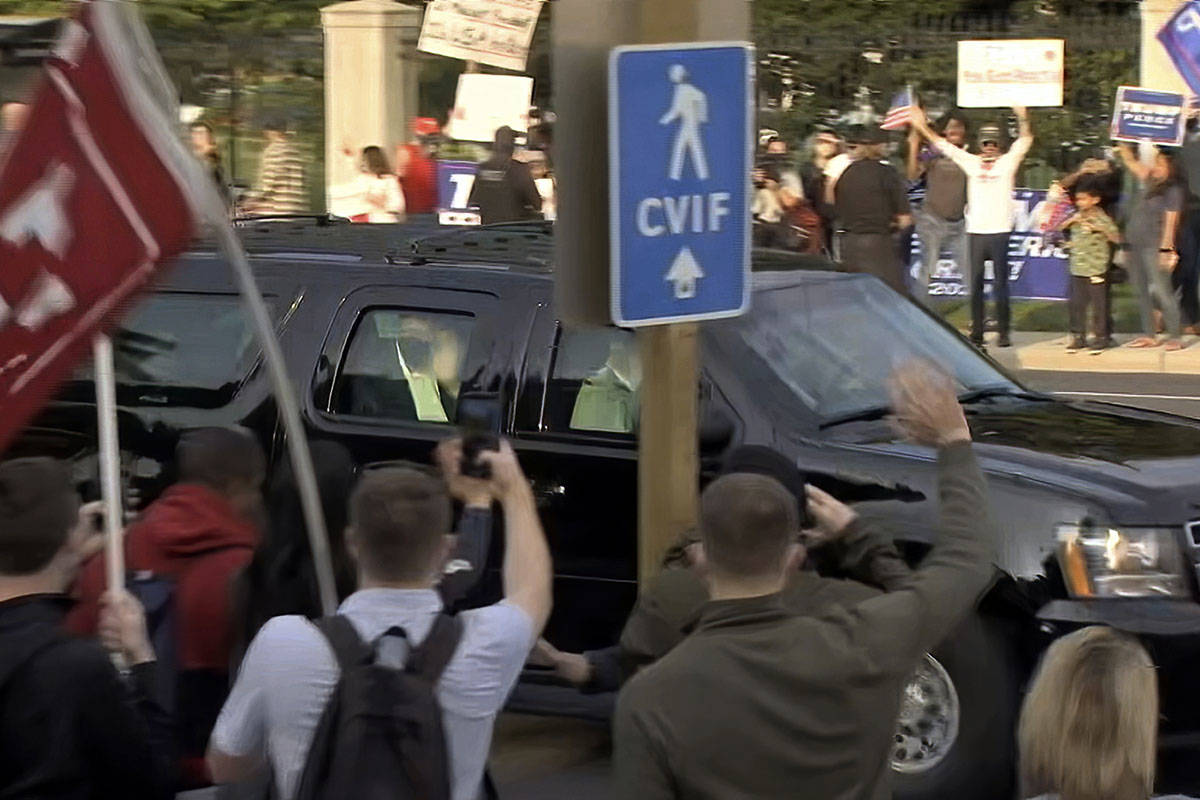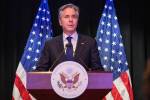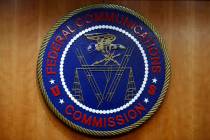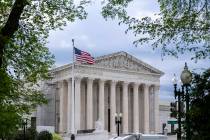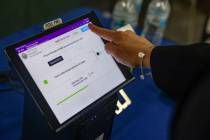Trump leaves hospital briefly to drive past his supporters
BETHESDA, Md. — President Donald Trump declared, “I get it,” in a message to the nation Sunday evening before briefly leaving the hospital to salute cheering supporters from his motorcade. The surprising move raised new questions about his understanding of the deadly coronavirus that has killed more than 209,000 Americans.
Hours earlier, the president’s medical team reported that his blood oxygen level dropped suddenly twice in recent days. The doctors also said his health is improving and that he could be discharged as early as Monday.
“It’s been a very interesting journey. I learned a lot about COVID,” Trump said, standing in his hospital room in a video posted on social media. “I learned it by really going to school.”
He added, “I get it, and I understand it.”
Trump drives by the press and supporters outside Walter Reed hospital. pic.twitter.com/3phtKthqTH
— Philip Crowther (@PhilipinDC) October 4, 2020
At least one medical professional inside Walter Reed National Military Medical Center, where Trump has been hospitalized since Friday evening, questioned whether Trump had really learned anything about the virus that has swept through Republican leadership.
“Every single person in the vehicle during that completely unnecessary presidential ‘drive-by’ just now has to be quarantined for 14 days. They might get sick. They may die. For political theater. Commanded by Trump to put their lives at risk for theater. This is insanity,” Dr. James P. Phillips, an attending physician at Walter Reed, tweeted.
Trump’s doctors revealed Sunday that they gave the president a steroid treatment typically only recommended for the very sick. But they sidestepped questions about exactly when Trump’s blood oxygen dropped — an episode they neglected to mention in multiple statements the day before — or whether lung scans showed any damage.
Confusion on details
It was the second straight day of confusion and obfuscation from a White House already suffering from a credibility crisis. And it raised questions about whether the doctors treating the president were sharing accurate, timely information with the American public about the severity of him condition.
Pressed about conflicting information he and the White House released on Saturday, Navy Cmdr. Dr. Sean Conley acknowledged that he had tried to present a rosy description of the president’s condition.
“I was trying to reflect the upbeat attitude of the team, that the president, that his course of illness has had. Didn’t want to give any information that might steer the course of illness in another direction,” Conley said. “And in doing so, came off like we’re trying to hide something, which wasn’t necessarily true. The fact of the matter is that he’s doing really well.”
The briefing outside the Walter Reed National Military Medical Center lasted just 10 minutes.
Medical experts said Conley’s revelations raised new questions about how ill the president was and are hard to square with the doctor’s upbeat assessment and talk of a discharge.
“There’s a little bit of a disconnect,” said Dr. Steven Shapiro, chief medical and scientific officer at the University of Pittsburgh Medical Center.
Blood oxygen saturation is a key health marker for COVID-19 patients. A normal reading is between 95 and 100. Conley said the president had a “high fever” and a blood oxygen level below 94% on Friday and during “another episode” on Saturday.
He was evasive about the timing of Trump oxygen drops. (“It was over the course of the day, yeah, yesterday morning,” he said) and asked whether Trump’s level had dropped below 90%, into concerning territory. (“We don’t have any recordings here on that.”) But he revealed that Trump was given a dose of the steroid dexamethasone in response.
At the time of the briefing, Trump’s blood oxygen level was 98% — within normal rage, Trump’s medical team said.
Signs of pneumonia or other lung damage could be detected in scans before a patient feels short of breath, but the president’s doctors declined to say what those scans have revealed.
“There’s some expected findings, but nothing of any major clinical concern,” Conley said. He declined to outline those “expected findings.”
Asked about Conley’s lack of transparency, White House aide Alyssa Farah suggested the doctors were speaking as much to the president as to the American public, “when you’re treating a patient, you want to project confidence, you want to lift their spirits and that was the intent.”
Trump was back on social media Sunday.
First he shared a video of flag-waving supporters outside the hospital, many of them not wearing face masks to prevent spread of the virus. And later, he sent his loyalists a direct message on Twitter: “The fact is, they really love our Country and are seeing how we are MAKING IT GREATER THAN EVER BEFORE!”
Trump teased his surprise departure in a brief video posted to his Twitter page.
— Donald J. Trump (@realDonaldTrump) October 4, 2020
“I also think we’re going to pay a little surprise to some of the great patriots that we have out on the street,” he said, after thanking the doctors at the facility.
Trump did not alert the pool of reporters who are supposed to travel with him before leaving the hospital.
I really appreciate all of the fans and supporters outside of the hospital. The fact is, they really love our Country and are seeing how we are MAKING IT GREATER THAN EVER BEFORE!
— Donald J. Trump (@realDonaldTrump) October 4, 2020
Officials frustrated
Several White House officials this weekend expressed frustration with the level of transparency and public disclosure since the president announced his diagnosis early Friday.
They were particularly upset by the whiplash between Conley’s rosy assessment Saturday and chief of staff Mark Meadows’ more concerned outlook. They privately acknowledge that the administration has little credibility on COVID-19 and that they have unnecessarily squandered what remains of it with the lack of clear, accurate updates on Trump’s condition.
Most of that frustration appears to be directed at Trump himself, with aides believing that he has restricted what Conley can say or that Conley has tried to appease the president by presenting an optimistic outlook. They also blame Meadows for not establishing clear lines of communication and for making the situation worse Saturday.
Many in the White House are also shaken and scared — nervous that they have been exposed to the virus and confronting the reality that what seemed like a bubble of safety has become a COVID-19 hot spot. There has been no mass directive sent to staff on how they should respond.
At the same time, the White House has been working to trace a flurry of new infections of close Trump aides and allies, including adviser Hope Hicks, former New Jersey Gov. Chris Christie, former White House counselor Kellyanne Conway and several Republican lawmakers. The president’s campaign manager, Bill Stepien, and the head of the Republican National Committee, Ronna McDaniel, have also tested positive.
Meanwhile, former Vice President Joe Biden’s campaign said the Democratic presidential nominee again tested negative for coronavirus Sunday. The results come five days after Biden spent more than 90 minutes on the debate stage with Trump. Biden had two negative tests on Friday, as well.



